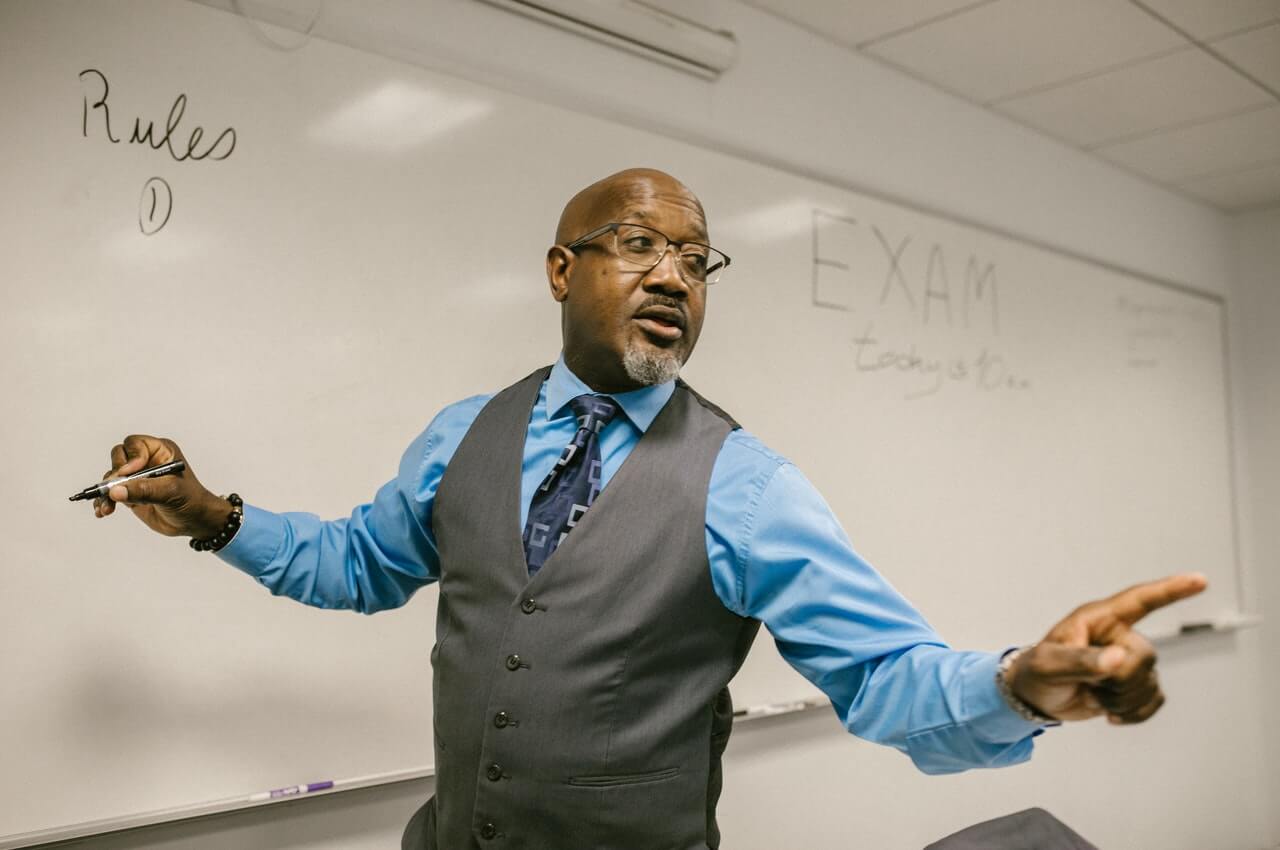
We all seem to have answers for success, but they aren’t the same. Are there stereotypes of success? It’s not just about training stereotypes for success: that is people who look and act like us and have the same education and training. It’s a start, but there’s more.
As trainers, it is important for us to think about what it is our companies want to gain from our trainees. Maybe we should be training the keys of success. What does make someone a success in a company? It varies, but some things remain the same. How do we gauge success? If we understood that, then maybe the hiring process gets a little easier, productivity better, personnel issues better understood. Is it simple communication?
Basic communication should, of course, make the cut of being able to communicate what needs to be said and understood by another party. It makes sense in this country that most people can understand one another pretty well; however, we do have our issues. Because we have a large number of Spanish-speaking people does that mean our company has to accommodate them. In Quebec, acceptance its bi-lingual nature is the law; that is not the case here in America–not yet. So, a non-English speaker can expect for that to be a handicap, initially; however, there are environments, even in the U.S. where that is a plus, not a negative.
Probably the first thing the Cave Man did was try to understand the language of other tribes after spending a good deal of time trying to kill all those who were different. Eventually, he came to realize if he wanted to learn from these strange people, he had to understand them and language was the best way. We do it today–or at least we try to make ourselves understood, realizing many may not understand our language.

For example, we say on the phone click one number for English and another for Spanish. A least we will speak the language–sort of. But in other situations if we use big words or slang the other person doesn’t understand, have we accomplished communication. Have we offended either party with this conversation that is marginally understood?
I’m going to look at communication, language, education and training success based on our use of language, and in my own Cave Man basic way try to make some sense of it.
Now, let’s assume we speak the same language. Does that always mean we are successful? I saw an interesting article, the Best Kept Secrets of Successful Business People, but found many of its ideas fit anyone who seeks success. Xianhang Zhang says, “If you feel like you’re the smartest guy in a room, that’s probably because someone is fleecing you.” Too often students listen to others and feel the way to success is to get the diploma, but it’s always more than that. We know the diploma may get you in the door; it may even get you hired, but it will not guarantee you success.

And, this happens to trainees, too. “I’ve got the education or training now so promote me.” How many times have we heard the term “proven success?” It seems sometimes workers don’t hear it. That means a track record of accomplishments. Training and education is one thing–accomplishments another. Success is not a simple matter.
With education and training, it is important to apply it. It is almost a no brainer to most of us who sit in observation. You can be booksmart, but not have the character to use it. With common sense you go into the education or training with the idea of what’s in it for me? What can I do with this information? Every piece of learning can be connected to a practical issue. If you aren’t connecting it to something you can do with it, you are connecting it to something you have done with it in the past. The result either way is a practical connection.
Want to know why most people don’t get the jobs they apply for? I has nothing to do with race or other obvious or often thought of stereotypical attributes. It’s because they look good on paper, but in person they lack something very important–a confidence and knowledge of application. A company doesn’t want to know if you have the knowledge but can you apply it; HR wants to know if you have the knowledge to separate you from those who admit they don’t. The company wants to know if you’ll be able to use what you know to their benefit. At this point, they really don’t care about you. Later that may change after you have proven yourself.

So being the smartest guy in the room doesn’t make you the most marketable. Now the company has hired the “smartest guy” in the room, they want to know, not only are you capable of applying that knowledge, but if you will fit into a company that has people who know what you do and apply. Surprise! You may not be the smartest guy in the room right now after all.
Businessman Frank E. Rider makes some some simple but sensible points:
- Work Hard
- Be Smart
- Be Lucky
“By ‘Work Hard’ I don’t mean lift heavy boxes or work 80 hours a week. Do the things that are hard, the things you don’t understand or don’t want to do. Do the hard things.
“By ‘Be Smart’ I don’t mean be Einstein. The first rule of being smart is “don’t be dumb.” Think things through, be street smart, get at least one good nugget from every person you come in contact with. Behind every successful businessman/woman there are several thousand people (mentors, advisors, peers, competitors, employees, customers, vendors etc.) The human wiki.
“Don’t leave out luck. It’s a state of mind. Working hard and being smart will put you in position to take advantage of luck when it presents itself.”
So what distinguishes you? Character. Leadership. The ability to get along with others. The ability to leave your ego at home. Attitude is key to fitting in. Being the stereotype.

Fitting in. It doesn’t mean changing yourself until you are unnoticeable. Are you so shallow that if you can’t speak the way you always do, that means your less than yourself. We like people who speak other languages. Successful people speak a company language–usually a standard English (unless you have a job with a foreign company) so we speak the most common language of our customers.
If we do something more individual in nature like use “street talk” or “slang,” we may be cool but we don’t speak for the company. If this is too much of a challenge, you should look for another job where that language is appropriate. I don’t know many like that. At least not ones that pay well or are legal. You see these companies don’t care, and the products are in so much demand by an unsophisticated public.
Ax yo’self whad it means. Insulted that I should assume you speak that way. Insulted I should assume anything about you. That is exactly the point. We shouldn’t have any reason to assume anything about you. At first, language used in such a way my be charming; its certainly individual, but it will lose the respect of those you serve. Company speak, notice I did not call it standard English, is not as interesting.
It is assumed by people of color (to use their own term of acceptance here) that someone is a hiring person is prejudiced by race or color. Experience tells them you have certain attitudes and speak to customers in a certain way if the interview does not bring out the opposite. If you are well spoken in company speak, that fact will be ignored by most. I will admit a few prejudiced souls are still out there, but try dressing like the company and acting like the company and you most likely will fit in.
If you do not get the job, look at your other qualifications, education, work history, availability, and general attractiveness. The last is actually one of the more significant, unspoken rules of business. Image of company is everything. Short people beware except in a petite shop. Tall, good-looking people rule; product knowledge and procedures can be taught, while genetics are what they are. We have laws that prevent overt prejudice, but older people don’t apply to a younger company that sells to a young clientele either and vice versa. Certain businesses seek young female sales persons because the clietele is largely female. Seen very many males work at Victoria’s Secret, and some seek men to talk to businesses who have predominately male customers, i.e. John Deer.

Often the world deals in stereotypes. Being a stereotype also means you fit in to an expected norm. So much so, take one look at theatre or film and you’ll see it full of stereotypes so much so it’s news when someone breaks that barrier. Take Denzel Washington. Like many African American actors, he could have allowed himself to be stereotyped and indeed he was until he first rose to prominence when he joined the cast of the medical drama St. Elsewhere, playing Dr. Philip Chandler for six years. That made a wider range of people take notice; however, early one he had to accept that stereotype and change it–for himself anyway. Later we see him the hero. He is well spoken and when he puts on the hood vernacular we are somewhat surprised. Success is based on changing up that stereotype.
All things being equal in theatre, an actor can lose a part to another who is more stereotypically the part, all talent being equal. It’s the same in the real world. Stereotypes stay what they are if you let them. There are stereotypes as long as we reinforce them. But you can change them by broadening their focus. Some actors love stereotypes–that is, if it gets them a lot of work. Take the actors who have dark features: they can play, Native Americans, Spanish, South or Central American, North African, Arab or Muslim, and sometimes Eastern European or even Indian or Pakistani. I’m a blond, which has limited me to particular parts, California, Irish, German, Danish, etc., however, if I tried to convince others I could play ethnic roles I would be disappointed. There are two many who already fit that stereotype so why waste time with me. In Hollywood, in the past, those same characters would have been played by a caucasian actor of note, i.e., a very bad John Wayne as Ghengis Khan, and, we scoffed. But Hollywood was made to take the ethnic because the audience (and the union) demanded it, but the experience was better all around. These actors accepted the fact that they were a stereotype in one way, but still had to fit into the company. Speaking only one way would have limited them severely.

Perseverance is what has made these character actors successful. Not only persistence in getting what they wanted, they listened to what was being said and noted the trends. They fit themselves into the trends. This is idea is not new. Ever hear of the man of a thousand faces? There is actually an old movie about Lon Chaney, a horror film star you may have hear about. The film starred James Cagney, another actor, who certainly didn’t fill the stereotype of tall, good-looking, but he played this role of an actor who wanted to work so bad that he disguised himself into whatever the film company was looking for, and got the part, proving that anything is possible if you try to fit in. Lon Chaney became the “man of a thousand faces” setting the standards for the movie industry to use people who were good actors to play parts they may not fit physically and use make-up, costumes and special effects to create the whole effect. Attitude, perseverence, using the ego to motivate or persevere, but do not wait for success, make it happen is the way to do.
By the way, there are may theories on success, read them, contemplate them, apply them if they fit. Don’t try to be the first to apply your own theory, you may not even get the job. You’ll have a lot of people during it their way; do you really think they want you working against them. Fit in with them and use your way if it brings you success, but only then. Use it before, unless you work for yourself, and you won’t fit in. We like being individuals, but the world is made of people who live together, and they can’t help putting stereotypes to their world. If you want to be like them, you have to a stereotype with a difference but still one they appreciate.
—
For more resources about training, see the Training library.
I always remind folks that this is my opinion and I hold no one else responsible for the way my mind works. But I am open and been known to change my mind for another point of view. We are all learners here. This a long blog or article even for me. If you are interested in hearing some of my other views, check out my website under the category of What I Say. Be sure to check out my new book onThe Cave Man Guide to Training and Development and look for my second, The Cave Man Guide to Communication coming soon. Happy training.


















































